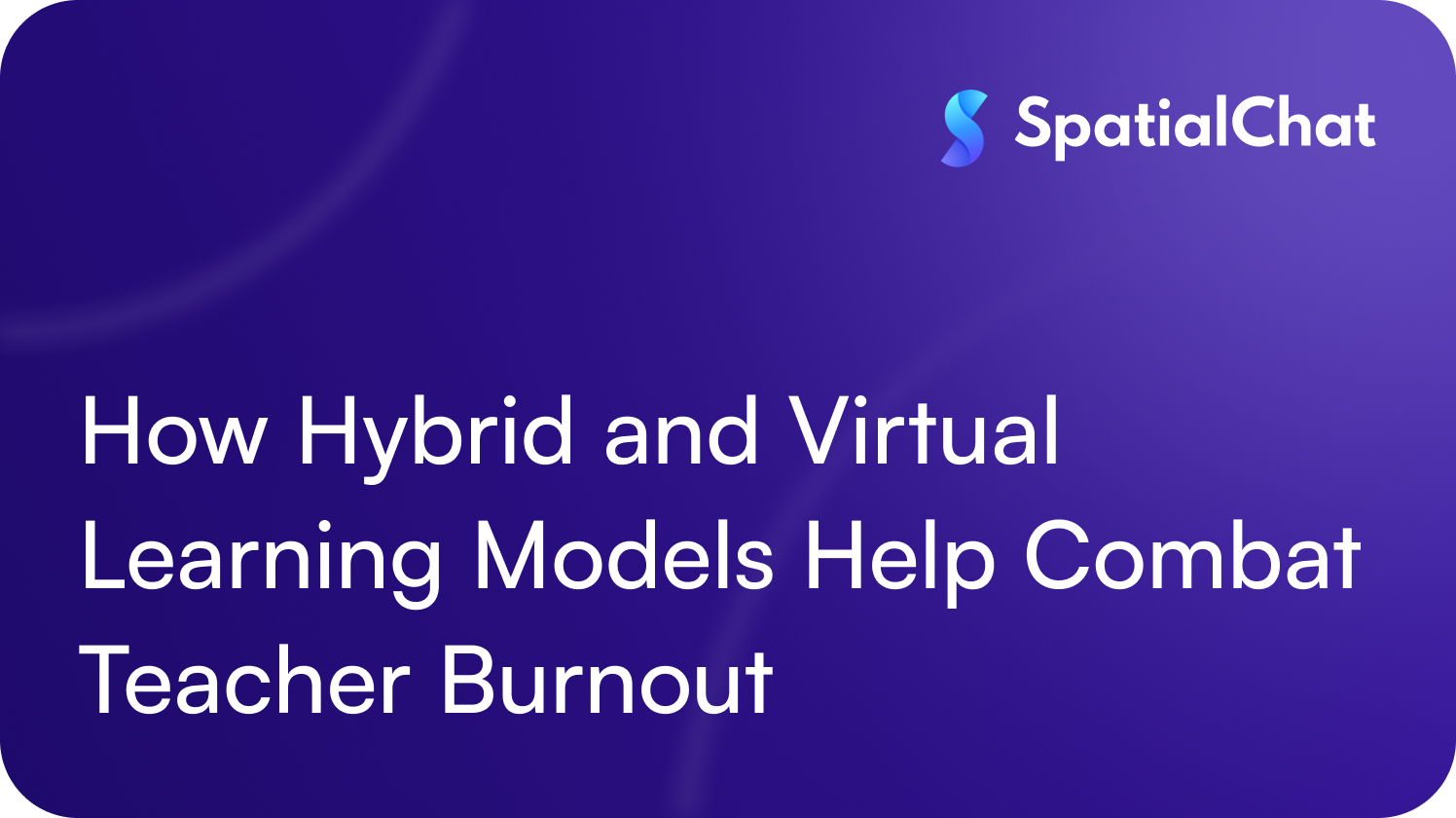Teachers today face mounting demands and increasing job-related stress, leading to a significant rise in burnout. This has become a pressing concern for K-12 schools and districts as they search for effective ways to ease the burden on educators. With 44% of U.S. teachers reporting that they very often or always feel burned out at work, the urgency to find sustainable solutions is clear.
Hybrid and virtual teaching models are emerging as a promising path forward. By offering greater flexibility, lighter workloads, and stronger professional support, these approaches can help educators build long, rewarding careers in a more balanced and manageable way.
What’s causing teacher burnout—and why does it matter?
Teacher burnout is driven by a mix of overwhelming workloads, emotional demands, and a persistent lack of work-life balance. The pressure to juggle academic responsibilities, classroom management, and students’ diverse needs can quickly become unsustainable. As a result, many educators feel stretched thin, leading to high turnover rates that disrupt learning environments and compromise student outcomes.
This turnover contributes directly to the nationwide teacher shortage. According to recent data, more than 18 million students in the U.S. lack access to a full roster of educators, and the Annenberg Institute at Brown University reports over 55,000 unfilled full-time teaching positions. Beyond the immediate impact on students, burnout and attrition drive up recruitment costs, drain schools of experienced talent, and place even more stress on the teachers who stay—fueling a cycle that’s increasingly difficult to break.
How hybrid and virtual models can help
The growing buzz around HyFlex education and virtual teaching models is well-founded. These approaches offer meaningful advantages for both educators and students—and address many of the root causes of teacher burnout. By introducing more flexible scheduling and the option to teach remotely, hybrid and virtual environments allow educators to reclaim a healthier work-life balance. This flexibility reduces the physical and emotional strain that often comes with traditional, rigid school routines.
In addition, virtual platforms can ease the burden of administrative tasks by automating processes like attendance and grading. This frees up time for teachers to focus on what matters most: delivering high-quality instruction and supporting student growth.
The long-term benefits are just as compelling. Hybrid and virtual models promote more sustainable teaching careers by creating work environments that are adaptable, supportive, and less taxing. For schools and districts navigating the future of education, adopting these models isn't just a strategy for improving student outcomes—it’s a critical step toward protecting the well-being and longevity of the educators at the heart of the system.
What educators are saying about hybrid and virtual learning
As we spoke with teachers about how HyFlex and virtual models are shaping the future of education, one thing became clear: flexibility is key. Many shared that platforms like SpatialChat have helped them strike a better balance between personal well-being and professional responsibilities.
One educator told us,
“It doesn’t have to be fully in-person or fully virtual. There’s a way to mix the two—and that blended approach feels like the future of education.”
Several teachers emphasized how SpatialChat has expanded access to unique learning experiences.
“We’ve been able to offer college-level courses and niche electives like digital media and forensic science—classes our students wouldn’t have had access to otherwise,” one educator explained.
Even those working primarily in traditional classrooms are using SpatialChat to enhance their teaching.
“I’ve brought in guest speakers—authors, scientists, experts—who joined us virtually from all over. It’s made learning so much more dynamic and engaging.”
And the benefits extend beyond the classroom.
“We’ve started holding parent meetings, IEPs, and check-ins virtually. It’s been a huge help for families who can’t always make it to school during the day,” shared another teacher.
These real-world insights reflect a growing sentiment: hybrid and virtual tools like SpatialChat aren’t just convenient—they’re transforming how teachers teach, and how students learn.
Investing in technology to support teachers—and the future of education
To effectively combat teacher burnout and build a more resilient workforce, schools and districts need to invest in technologies that enable hybrid and virtual learning. SpatialChat helps empower educators with the flexibility, support, and innovation needed to create sustainable teaching environments—while also improving student outcomes.
By adopting a virtual learning platform, K-12 institutions are investing in a future that offers:
- Stronger student engagement through interactive whiteboards, dynamic breakout rooms, spatial audio, AI-generated content, and real-time reactions that keep students actively involved in lessons.
- Personalized instruction that allows educators to adapt lessons to individual learning needs, helping every student thrive—regardless of background or ability.
- Smarter insights with built-in engagement tracking that gives teachers and administrators instant visibility into participation, interaction, and instructional impact.
As educational demands evolve, so should the tools we use. SpatialChat helps schools create a supportive, flexible teaching environment that not only addresses today’s challenges—but sets the stage for long-term success.
Curious how SpatialChat can support your teachers and reduce burnout? Let’s connect.
